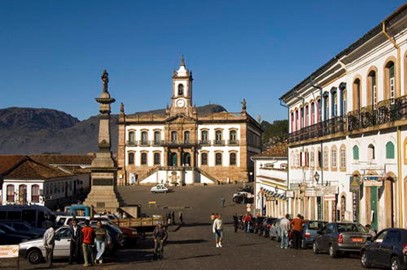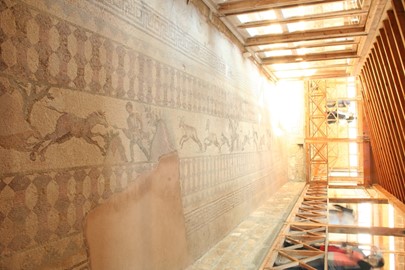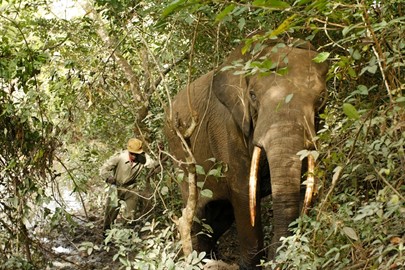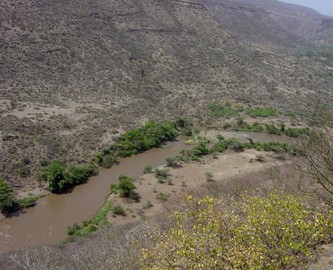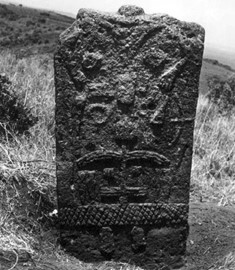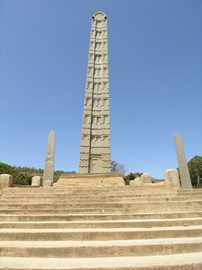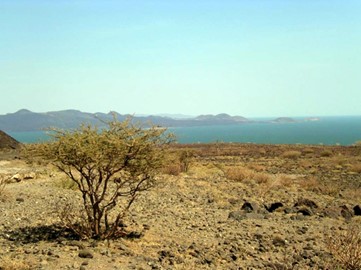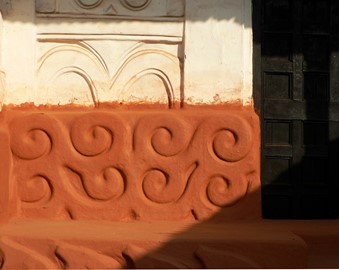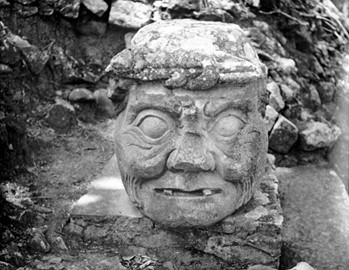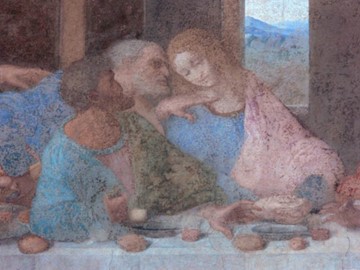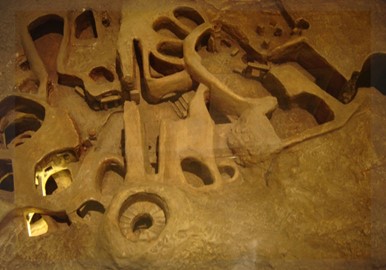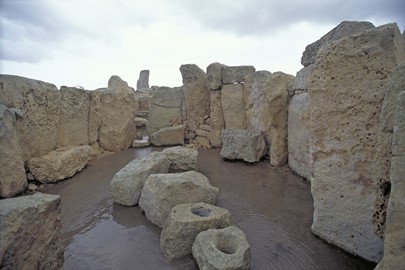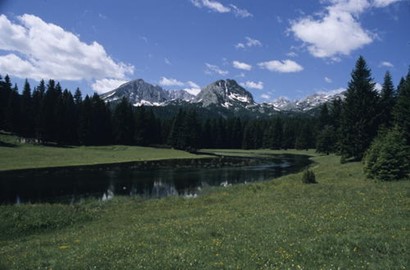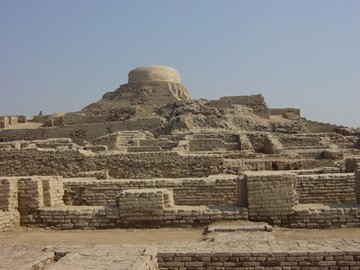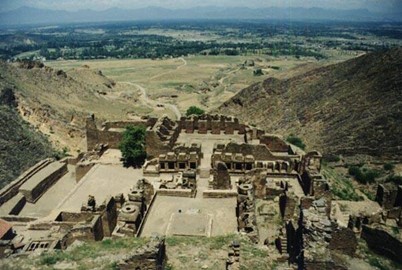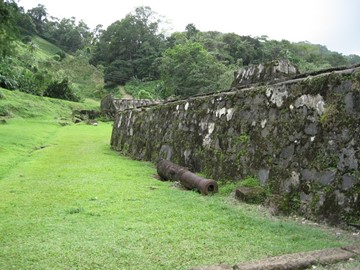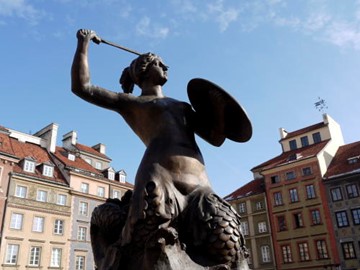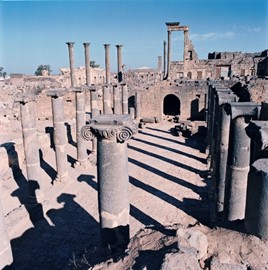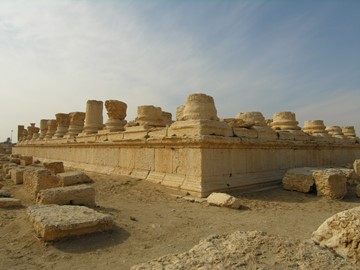year :: 1980
Rome
The Historic Centre of Rome, the Properties of the Holy See in that City Enjoying Extraterritorial Rights and San Paolo Fuori le Mura, a UNESCO World Heritage site in Italy, recognized in 1980 and extended in 1990, encompasses Rome’s ancient core and key Vatican properties. Featuring iconic landmarks like the Colosseum, Roman Forum, and St. Peter’s Basilica, it reflects over 2,800 years of urban, architectural, and religious history. This site showcases Italy’s unparalleled cultural heritage, blending Roman... Read More
Al Qal'a of Beni Hammad
Al Qal’a of Beni Hammad, a UNESCO World Heritage site in Algeria, recognized in 1980, is an 11th-century fortified city in a mountainous region, once the capital of the Hammadid dynasty. Its ruins—featuring a grand mosque, palace, and defensive walls—reflect early Islamic urban planning and architecture in North Africa. This well-preserved site showcases Algeria’s medieval heritage, offering a glimpse into a vanished Berber dynasty’s cultural and political legacy.
Ouro Preto
The Historic Town of Ouro Preto, a UNESCO World Heritage site in Brazil, is a colonial gem celebrated for its Baroque architecture and gold rush history. Founded in the late 17th century, its cobblestone streets are lined with ornate churches, grand mansions, and works by sculptor Aleijadinho, reflecting its past wealth. Recognized by UNESCO in 1980, it preserves a vivid picture of Brazil’s 18th-century prosperity. Ouro Preto remains a striking symbol of the country’s cultural and artistic legacy.
Paphos
Paphos, a UNESCO World Heritage site in Cyprus, is renowned for its rich historical and cultural significance. This ancient city boasts well-preserved archaeological treasures, including intricate Roman mosaics, the Tombs of the Kings, and the remains of a Greek-Roman theater. Its historical importance is tied to its role asa center of worship for Aphrodite, the Greek goddess of love, with sites like the Petra tou Romiou marking her mythical birthplace. Paphos seamlessly blends history with natural beauty, ... Read More
Garamba
Garamba National Park, a UNESCO World Heritage site in the Democratic Republic of the Congo, is renowned for its vast savannas, grasslands, and woodlands interspersed with gallery forests and swampy depressions. Established in 1938, it protects a diverse array of wildlife, including elephants, hippopotamuses, and the critically endangered Kordofan giraffe, though its northern white rhinoceros population is believed to be extinct in the wild. Despite its rich biodiversity, the park faces significant threats ... Read More
Kahuzi Biega
Kahuzi-Biega, a UNESCO World Heritage site in the Democratic Republic of Congo, is renowned for its rich biodiversity and stunning landscapes. This protected area is home to the critically endangered eastern lowland gorilla, along with numerous other rare species of flora and fauna. The site features a mix of dense rainforests, bamboo groves, and volcanic terrain, offering a unique ecological haven. It was inscribed as a World Heritage site in 1980 for its outstanding natural value and significance to globa... Read More
Lower Valley of the Awash
The Lower Valley of the Awash, a UNESCO World Heritage site in Ethiopia, is renowned for its exceptional paleontological significance, offering critical insights into human evolution through fossils dating back over 4 million years. The site gained global fame with the 1974 discovery of 'Lucy,' a 3.2-million-year-old Australopithecus afarensis skeleton, one of the earliest known bipedal hominids. Ongoing excavations continue to uncover a wealth of hominid and animal remains, solidifying its status as a key ... Read More
Tiya
Tiya, a UNESCO World Heritage Site in Ethiopia, is an ancient archaeological site renowned for its collection of 36 carved stone stelae. These mysterious monuments, adorned with enigmatic symbols like swords and human figures, are believed to mark a prehistoric burial complex, though their exact age and meaning remain uncertain, estimated between the 10th and 15th centuries. The site offers a glimpse into an early Ethiopian culture, showcasing its historical and artistic significance. Recognized in 1980, Ti... Read More
Aksum
Aksum, a UNESCO World Heritage site in Ethiopia, is an ancient city renowned for its historical and cultural significance. It was once the capital of the Aksumite Empire, a major trading power between the 1st and 7th centuries AD, connecting Africa with the Roman Empire and India. The site features impressive monolithic obelisks, royal tombs, and the ruins of palaces and churches, including the Church of St. Mary of Zion, believed by some to house the Ark of the Covenant. Aksum remains a testament to Ethiop... Read More
Lower Valley of the Omo
The Lower Valley of the Omo, a UNESCO World Heritage Site in Ethiopia, is a renowned prehistoric location celebrated for its significant contributions to understanding human evolution. It has yielded numerous hominid fossils, including early Homo sapiens remains dating back 195,000 years, alongside Australopithecus fragments and ancient stone tools from about 2.4 million years ago. These discoveries, preserved in ancient sedimentary deposits near Lake Turkana, highlight the site’s critical role in paleoanth... Read More
Asante Traditional Buildings
The Asante Traditional Buildings, a UNESCO World Heritage site in Ghana, showcase the architectural prowess and cultural heritage of the Asante people. Constructed primarily from mud, timber, and thatch, these structures feature intricate designs and vibrant colors, reflecting the society’s spiritual beliefs and social hierarchy. Built in the 18th and 19th centuries, they served as residences for chiefs and priests, embodying the power and wealth of the Asante Kingdom. Today, these well-preserved buildings ... Read More
Copán
Copán, a UNESCO World Heritage site in Honduras, is an ancient Mayan city renowned for its intricate stone carvings, hieroglyphic stairway, and well-preserved ruins. Flourishing between the 5th and 9th centuries, it served as a major political and cultural center, showcasing advanced architecture and artistry. Today, it offers a glimpse into the sophisticated Mayan civilization, attracting visitors with its historical significance and archaeological treasures.
Santa Maria delle Grazie
Santa Maria delle Grazie, a UNESCO World Heritage site in Italy, is a historic Dominican convent renowned for housing Leonardo da Vinci’s masterpiece, 'The Last Supper.' This 15th-century mural, painted in the convent’s refectory, exemplifies Renaissance art and innovation. The site itself, a blend of Gothic and Renaissance architecture, reflects the cultural and artistic heritage of its time. Its global significance lies in this extraordinary fusion of art and history.
Hal Saflieni Hypogeum
The Hal Saflieni Hypogeum, a UNESCO World Heritage site in Malta, is a remarkable prehistoric underground sanctuary dating back to around 3600–2500 BC. Discovered in 1902, this multi-level complex was carved from solid limestone and served as both a burial site and a place of worship, housing the remains of over 7,000 individuals alongside intricate chambers like the 'Holy of Holies.' Its well-preserved acoustics and red-ochre wall paintings offer a rare glimpse into Neolithic culture and religious practice... Read More
Valletta
Valletta, a UNESCO World Heritage site in Malta, is a historic fortified city renowned for its Baroque architecture, grand palaces, and stunning harbors. Founded in the 16th century by the Knights of St. John, it boasts iconic landmarks like St. John’s Co-Cathedral and the Grand Master’s Palace, reflecting its rich cultural and military past. Today, this vibrant capital blends history with modernity, offering visitors a captivating glimpse into its storied legacy.
Megalithic Temples of Malta
The Megalithic Temples of Malta, recognized as a World Heritage site, are among the oldest free-standing structures in the world, dating back to 3600–2500 BCE. Built by a prehistoric culture, these temples showcase advanced architectural techniques with large limestone blocks and intricate designs. They served as ceremonial and religious centers, offering insight into early human civilization and its spiritual practices. Today, they stand as a testament to Malta's rich archaeological legacy.
Durmitor
Durmitor National Park, a UNESCO World Heritage site in Montenegro, is renowned for its stunning natural beauty, featuring dramatic limestone peaks, deep canyons, and glacial lakes. The park is home to Tara River Canyon, one of the deepest gorges in Europe, and boasts diverse flora and fauna, including rare species like the Balkan chamois. Its rugged terrain offers opportunities for hiking, skiing, and rafting, making it a haven for outdoor enthusiasts. This protected landscape preserves both ecological ric... Read More
Røros
Røros Mining Town and the Circumference, a UNESCO World Heritage site in Norway, is a well-preserved historic mining town founded in 1646. Known for its copper mining heritage, the town features charming wooden architecture, including colorful 17th- and 18th-century buildings, and a prominent church that dominates the skyline. Its unique cultural and industrial history, shaped by centuries of mining activity, earned it a place on the World Heritage list in 1980. Today, Røros stands as a living museum, offer... Read More
Moenjodaro
The Archaeological Ruins at Moenjodaro, a UNESCO World Heritage site in Pakistan, represent one of the best-preserved urban settlements of the ancient Indus Valley Civilization, dating back to around 2500 BCE. This remarkable site showcases advanced engineering with its sophisticated drainage systems, brick-built structures, and a well-planned grid layout, reflecting the ingenuity of its Bronze Age inhabitants. Key features include the Great Bath, a large public water tank, and the so-called Granary, offeri... Read More
Taxila
Taxila, a UNESCO World Heritage site in Pakistan, is an ancient city renowned for its historical and cultural significance. Dating back to the 6th century BCE, it served as a major center of learning and trade, influenced by Persian, Greek, and Buddhist civilizations. The site features a wealth of archaeological remains, including stupas, monasteries, and urban settlements, reflecting its role as a crossroads of ancient cultures. Today, Taxila stands as a testament to the region’s rich past, offering valuab... Read More
Takht i Bahi and Sahr i Bahlol
Takht-i-Bahi and Sahr-i-Bahlol, a UNESCO World Heritage site in Pakistan, represent a well-preserved Buddhist monastic complex from the 1st to 7th centuries CE. Takht-i-Bahi features a hilltop monastery with intricately designed stupas, meditation cells, and assembly halls, showcasing ancient Buddhist architecture and urban planning. Nearby, Sahr-i-Bahlol contains archaeological remains of a thriving settlement linked to the monastery, offering insights into the region’s historical and religious significanc... Read More
Portobelo and San Lorenzo
Portobelo and San Lorenzo, a UNESCO World Heritage site in Panama, are historic colonial fortifications built by the Spanish in the 16th and 17th centuries along the Caribbean coast. These well-preserved sites, including the forts of San Lorenzo and various structures in Portobelo, were strategically designed to protect transatlantic trade routes and defend against pirate attacks. The area showcases a blend of military architecture and natural beauty, with stone walls, cannons, and scenic coastal views. Rec... Read More
Warsaw
The Historic Centre of Warsaw, a UNESCO World Heritage site in Poland, is a remarkable example of a meticulously reconstructed urban area, reflecting its resilience after near-total destruction during World War II. This vibrant district showcases a blend of architectural styles, including Gothic, Renaissance, and Baroque, with key landmarks like the Royal Castle and St. John’s Cathedral highlighting its rich history. Recognized for its cultural and historical significance, it stands as a testament to human ... Read More
Bosra
The Ancient City of Bosra, a UNESCO World Heritage site in Syria, is renowned for its well-preserved Roman, Byzantine, and Islamic architecture. This historic city features a remarkable 2nd-century Roman theater, one of the best-preserved in the world, alongside ancient mosques, churches, and a sprawling network of ruins. Bosra’s significance lies in its role as a key trading hub along ancient caravan routes, reflecting a rich blend of cultural influences over centuries. Today, it stands as a testament to S... Read More
Palmyra
Palmyra, a UNESCO World Heritage site in Syria, is an ancient city renowned for its well-preserved Roman-era ruins. Dating back to the 1st and 2nd centuries, it served as a vital trading hub along the Silk Road, blending Greco-Roman architecture with local influences. Notable landmarks include the grand colonnaded street, the Temple of Bel, and the iconic Tetrapylon, showcasing its historical and cultural significance. Despite suffering damage during recent conflicts, Palmyra remains a testament to the regi... Read More


